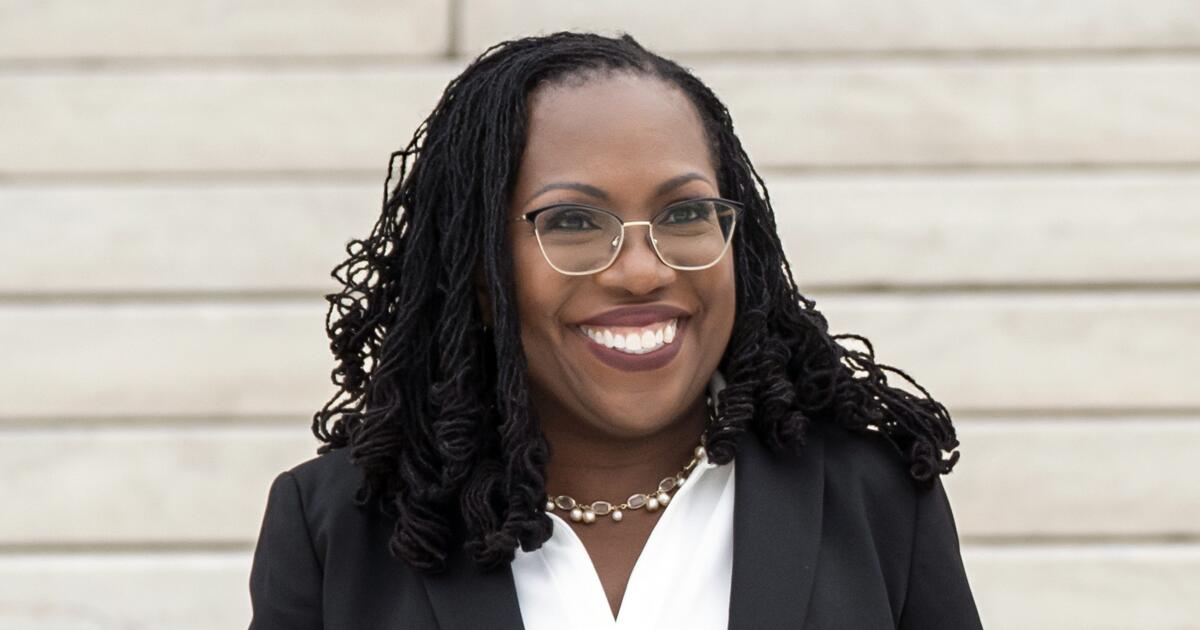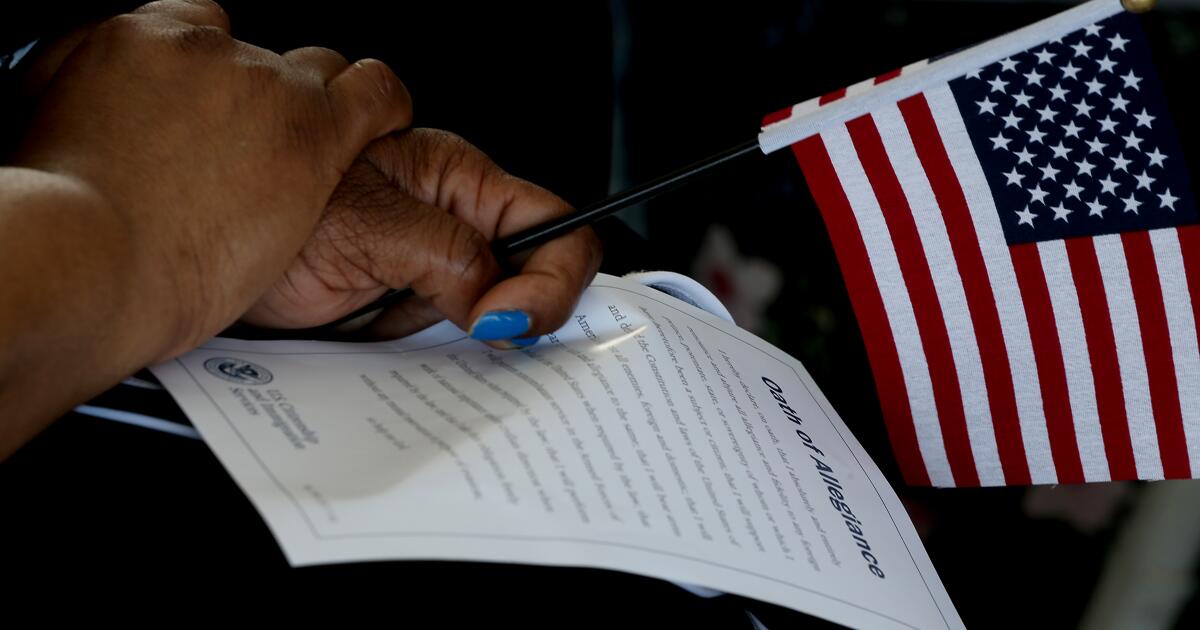Supreme Court ruling: The 9 LGBTQ+ children’s books that just upended public education
Picture books are not usually the stuff of Supreme Court rulings. But on Friday, a majority of justices ruled that parents have a right to opt their children out of lessons that offend their religious beliefs — bringing the colorful pages of books like “Uncle Bobby’s Wedding” and “Pride Puppy” into the staid public record of the nation’s highest court.
The ruling resulted from a lawsuit brought by parents in Montgomery County, Md., who sued for the right to remove their children from lessons where LGBTQ+ storybooks would be read aloud in elementary school classes from kindergarten through 5th grade. The books were part of an effort in the district to represent LGBTQ+ families in the English language arts curriculum.
In a 6-3 decision, the Supreme Court ruled that schools must “notify them in advance” when one of the disputed storybooks would be used in their child’s class, so that they could have their children temporarily removed. The court’s three liberals dissented.
As part of the the decisions, briefings and petitions in the case, the justices and lawyers for the parents described in detail the story lines of nine picture books that were part of Montgomery County’s new curriculum. In her dissent, Justice Sonia Sotomayor even reproduced one, “Uncle Bobby’s Wedding,” in its entirety.
Here are the nine books that were the subject of the case:
Pride Puppy
Author: Robin Stevenson
Illustrator: Julie McLaughlin

Book “Pride Puppy” published by Orca Book Publishers.
(Orca Book Publishers)
“Pride Puppy,” a rhyming alphabet book for very young children, depicts a little girl who loses her dog during a joyful visit to a Pride parade. The story, which is available as a board book, invites readers to spot items starting with each of the letters of the alphabet, including apple, baseball and clouds — as well as items more specific to a Pride parade.
Lawyers representing the parents said in their brief that the “invites students barely old enough to tie their own shoes to search for images of ‘underwear,’ ‘leather,’ ‘lip ring,’ ‘[drag] king’ and ‘[drag] queen,’ and ‘Marsha P. Johnson,’ a controversial LGBTQ activist and sex worker.”
The “leather” in question refers to a mother’s jacket, and the “underwear” to a pair of green briefs worn over tights by an older child as part of a colorful outfit.
The Montgomery County Public Schools stopped teaching “Pride Puppy” in the midst of the legal battle.
Love, Violet
Author: Charlotte Sullivan Wild
Illustrator: Charlene Chua

Book “Love Violet” published by macmillan publishers.
(macmillan)
The story describes a little girl named Violet with a crush on another girl in her class named Mira, who “had a leaping laugh” and “made Violet’s heart skip.” But every time Mira tries to talk to her, Violet gets shy and quiet.
On Valentine’s Day, Violet makes Mira a special valentine. As Violet gathers the courage to give it to her, the valentine ends up trampled in the snow. But Mira loves it anyway and also has a special gift for Violet — a locket with a violet inside. At the end of the book, the two girls go on an adventure together.
Lawyers for the parents describe “Love, Violet” as a book about “two young girls and their same-sex playground romance.” They wrote in that “teachers are encouraged to have a ‘think aloud’ moment to ask students how it feels when they don’t just ‘like’ but ‘like like’ someone.”
Born Ready: The True Story of a Boy Named Penelope
Author: Jodie Patterson
Illustrator: Charnelle Pinkney Barlow

Book “Born Ready” published by Random House.
(Random House)
In “Born Ready,” 5-year-old Penelope was born a girl but is certain they are a boy.
“I love you, Mama, but I don’t want to be you. I want to be Papa. I don’t want tomorrow to come because tomorrow I’ll look like you. Please help me, Mama. Help me be a boy,” Penelope tells their mom. “We will make a plan to tell everyone we know,” Penelope’s mom tells them, and they throw a big party to celebrate.
In her dissent, Sotomayor notes, “When Penelope’s brother expresses skepticism, his mother says, ‘Not everything needs to make sense. This is about love.’ ”
In their opening brief, lawyers for the families said that “teachers are told to instruct students that, at birth, people ‘guess about our gender,’ but ‘we know ourselves best.’ ”
Prince and Knight
Author: Daniel Haack
Illustrator: Stevie Lewis
“Prince and Knight” is a story about a prince whose parents want him to find a bride, but instead he falls in love with a knight. Together, they fight off a dragon. When the prince falls from a great height, his knight rescues him on horseback.
When the king and queen find out of their love, they “were overwhelmed with joy. ‘We have finally found someone who is perfect for our boy!’ ” A great wedding is held, and “the prince and his shining knight would live happily ever after.”
“The book Prince & Knight clearly conveys the message that same-sex marriage should be accepted by all as a cause for celebration,” said Justice Samuel Alito, who wrote the majority opinion, a concerning message for Americans whose religion tells them that same-sex marriage is wrong.
“For young children, to whom this and the other storybooks are targeted, such celebration is liable to be processed as having moral connotations,” Alito wrote. “If this same-sex marriage makes everyone happy and leads to joyous celebration by all, doesn’t that mean it is in every respect a good thing?”
Uncle Bobby’s Wedding
Author: Sarah S. Brannen
Illustrator: Lucia Soto
In “Uncle Bobby’s Wedding,” a little girl named Chloe learns that her beloved uncle is engaged to his partner, a man named Jamie. At first, she worries that the marriage will change her close bond with her uncle. But she soon embraces the celebration and the joy of getting another uncle through the union.
In the majority opinion, Alito wrote that the book sends children the message that “two people can get married, regardless of whether they are of the same or the opposite sex, so long as they ‘love each other.’ ” That viewpoint is “directly contrary to the religious principles that the parents in this case wish to instill in their children.” Parents ability to “present a different moral message” to their children, he said, “is undermined when the exact opposite message is positively reinforced in the public school classroom at a very young age.”
In her dissent, Sotomayor includes the entire book, writing that, “Because the majority selectively excerpts the book in order to rewrite its story.”
The majority’s analysis, she writes, “reveals its failure to accept and account for a fundamental truth: LGBTQ people exist. They are part of virtually every community and workplace of any appreciable size. Eliminating books depicting LGBTQ individuals as happily accepted by their families will not eliminate student exposure to that concept.”
Jacob’s Room to Choose
Author: Sarah Hoffman and Ian Hoffman
Illustrator: Chris Case

Book “Jacob’s Room To Choose” published by Magination Press.
(Magination Press)
“Jacob’s Room to Choose” is a follow-up to “Jacob’s New Dress,” a picture book listed as one of the American Library Assn.‘s top 100 banned books of the last decade.
Jacob wears a dress, and when he tries to use the boy’s bathroom, two little boys “stared at Jacob standing in the doorway. Jacob knew what that look meant. He turned and ran out.” The same thing happens to his friend Sophie, who presents as a boy and is chased out of the girl’s bathroom.
Their teacher encourages the whole class to rethink what gender really means. The class decides everyone should be able to use the bathroom that makes them feel comfortable, and makes new, inclusive signs to hang on the bathroom doors.
“After relabeling the bathroom doors to welcome multiple genders, the children parade with placards that proclaim ‘Bathrooms Are For Every Bunny’ and ‘[choose] the bathroom that is comfy,’ ” lawyers for the parents wrote.
IntersectionAllies: We Make Room for All
Author: Chelsea Johnson, LaToya Council and Carolyn Choi
Illustrator: Ashley Seil Smith

Book “IntersectionAllies: We Make Room for All” published by Dottir Press.
(Dottir Press)
“IntersectionAllies,” written by three sociologists, is a story about characters with different identities, including one who uses a wheelchair, and another, Kate, who identifies as transgender. One page shows Kate in a gender-neutral bathroom, saying, “My friends defend my choices and place. A bathroom, like all rooms, should be a safe space.”
In the majority opinion, Alito describes a discussion guide included with the book that he said asserts: “When we are born, our gender is often decided for us based on our sex . . . . But at any point in our lives, we can choose to identify with one gender, multiple genders, or neither gender.” The guide asks readers, “What pronouns fit you best?” Alito wrote.
What Are Your Words?: A Book About Pronouns
Author: Katherine Locke
Illustrator: Anne Passchier
“What Are Your Words” is a picture book about a child named Ari whose pronouns are “like the weather. They change depending on how I feel. And that’s ok, because they’re my words.” Ari’s Uncle Lior (who uses they/them pronouns) is coming to visit, and Ari is struggling to decide which words describe them.
“The child spends the day agonizing over the right pronouns,” the lawyers for the parents wrote. At the end, while watching fireworks, Ari says, “My words finally found me! They and them feel warm and snug to me.”
My Rainbow
Author: DeShanna Neal and Trinity Neal
Illustrator: Art Twink
“My Rainbow” tells the true story of a Black child with autism who self-identifies as a transgender girl. Trinity wants long hair, just like her doll, but has trouble growing it out. “The mother decides that her child knows best and sews him a rainbow-colored wig,” lawyers for the parents wrote.
The Montgomery County Public Schools also stopped teaching “My Rainbow” during the course of the lawsuit.
This article is part of The Times’ early childhood education initiative, focusing on the learning and development of California children from birth to age 5. For more information about the initiative and its philanthropic funders, go to latimes.com/earlyed.








